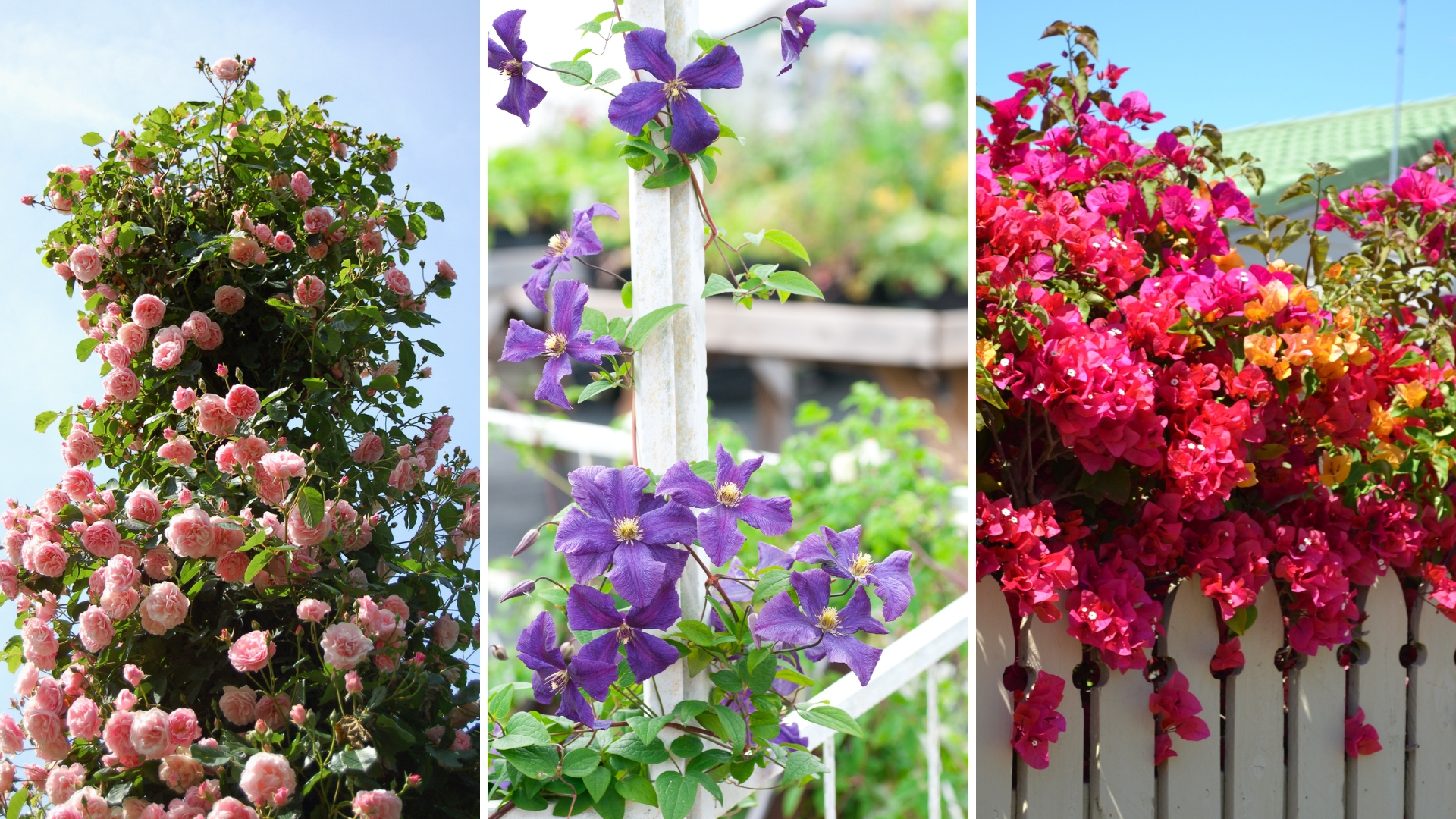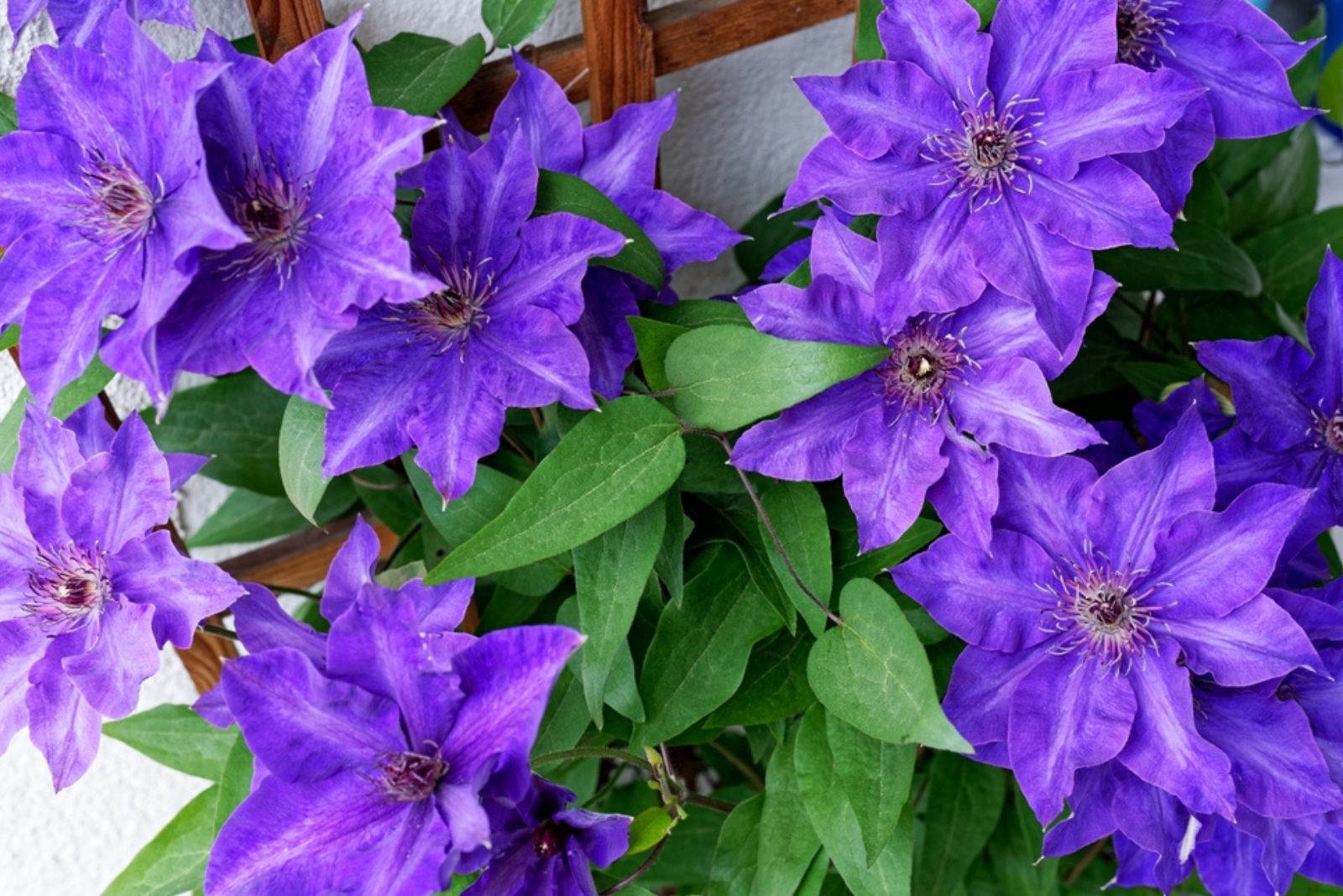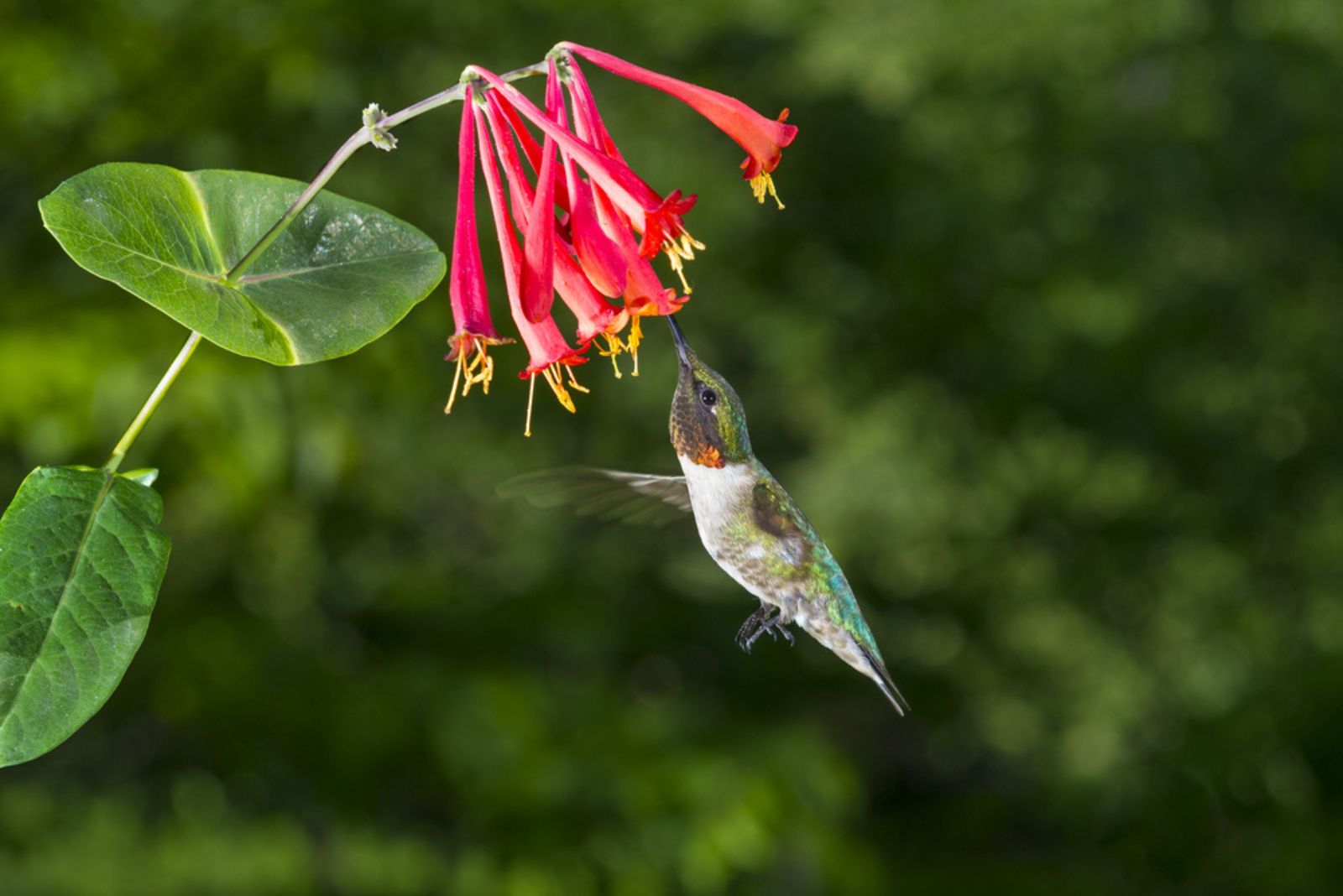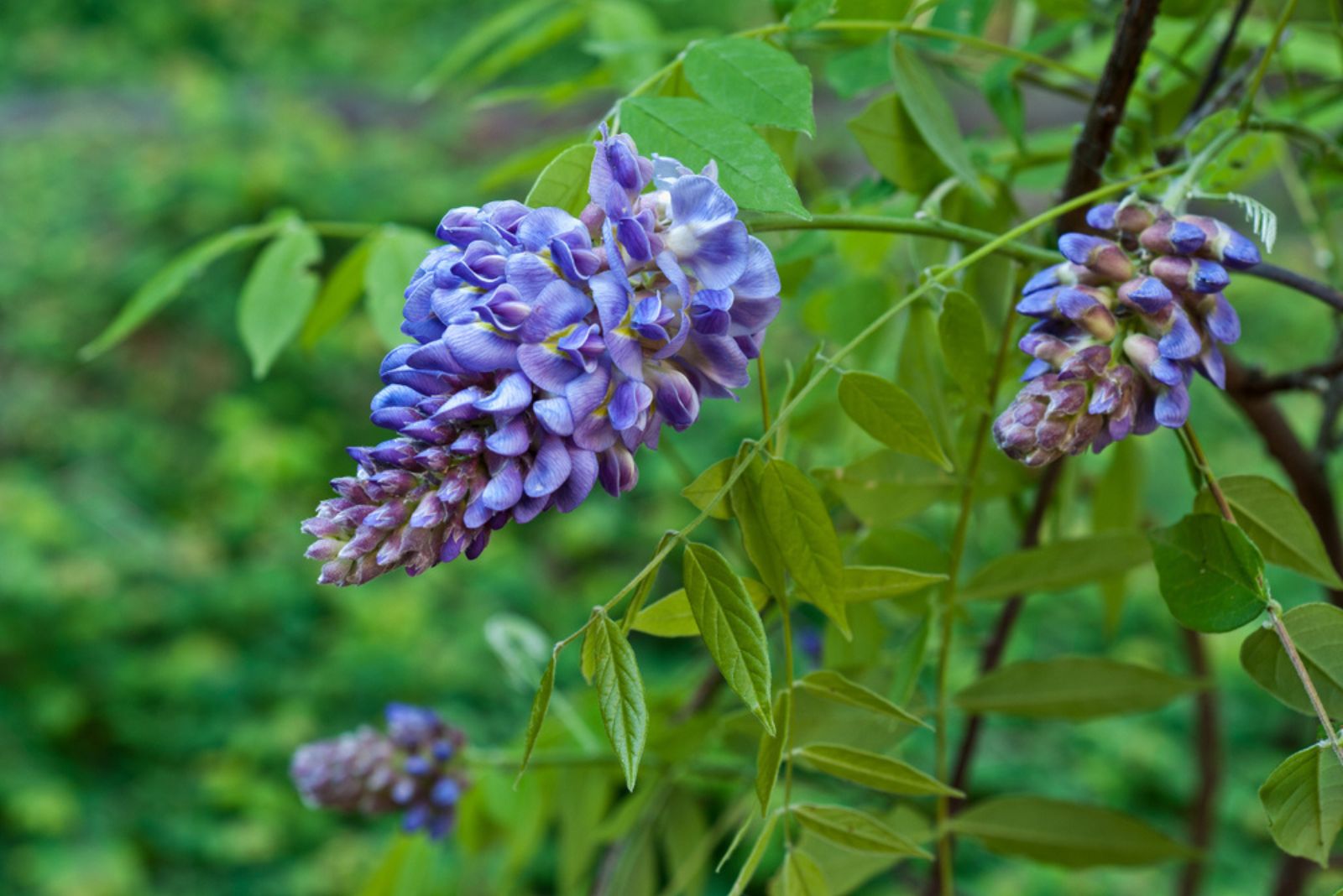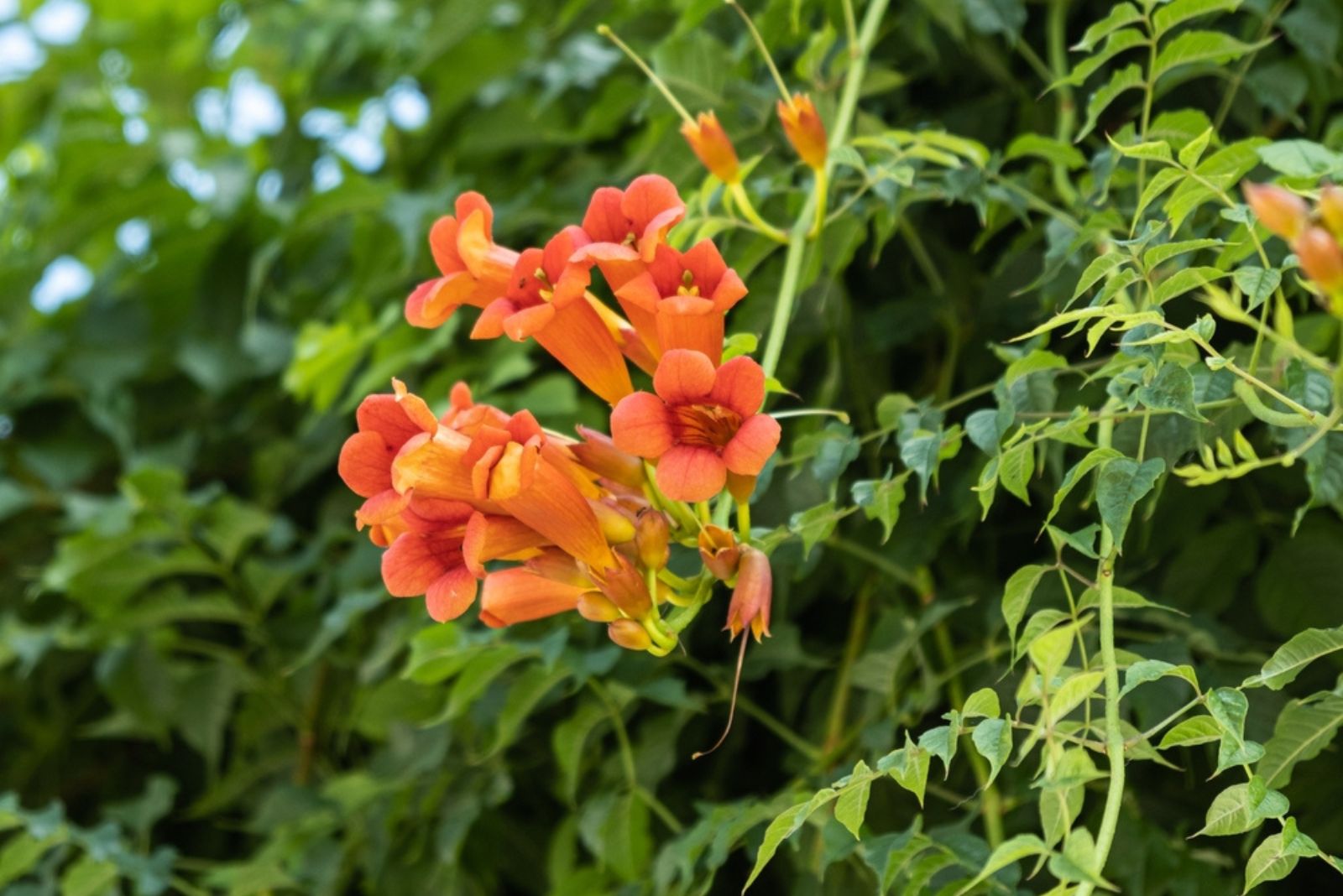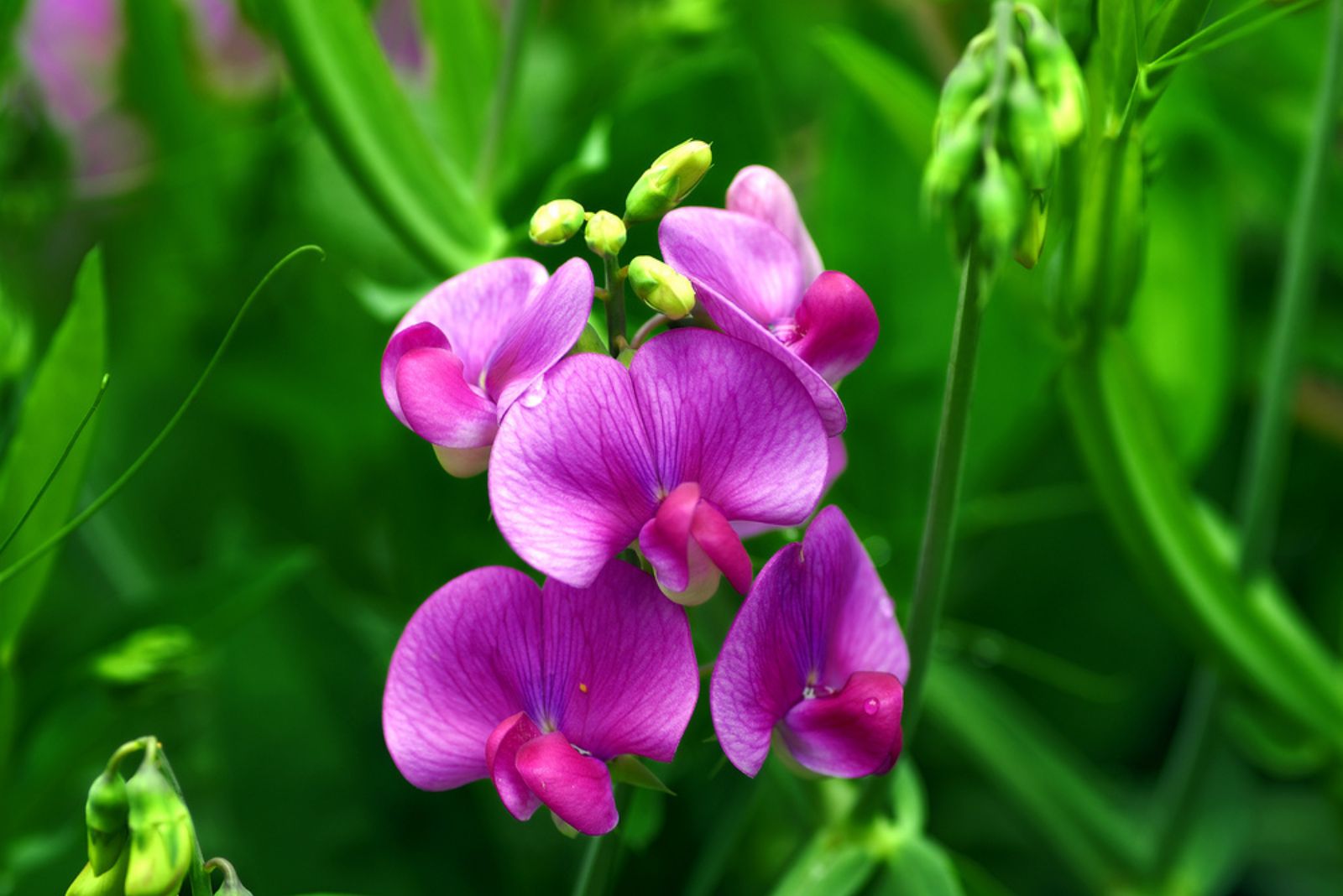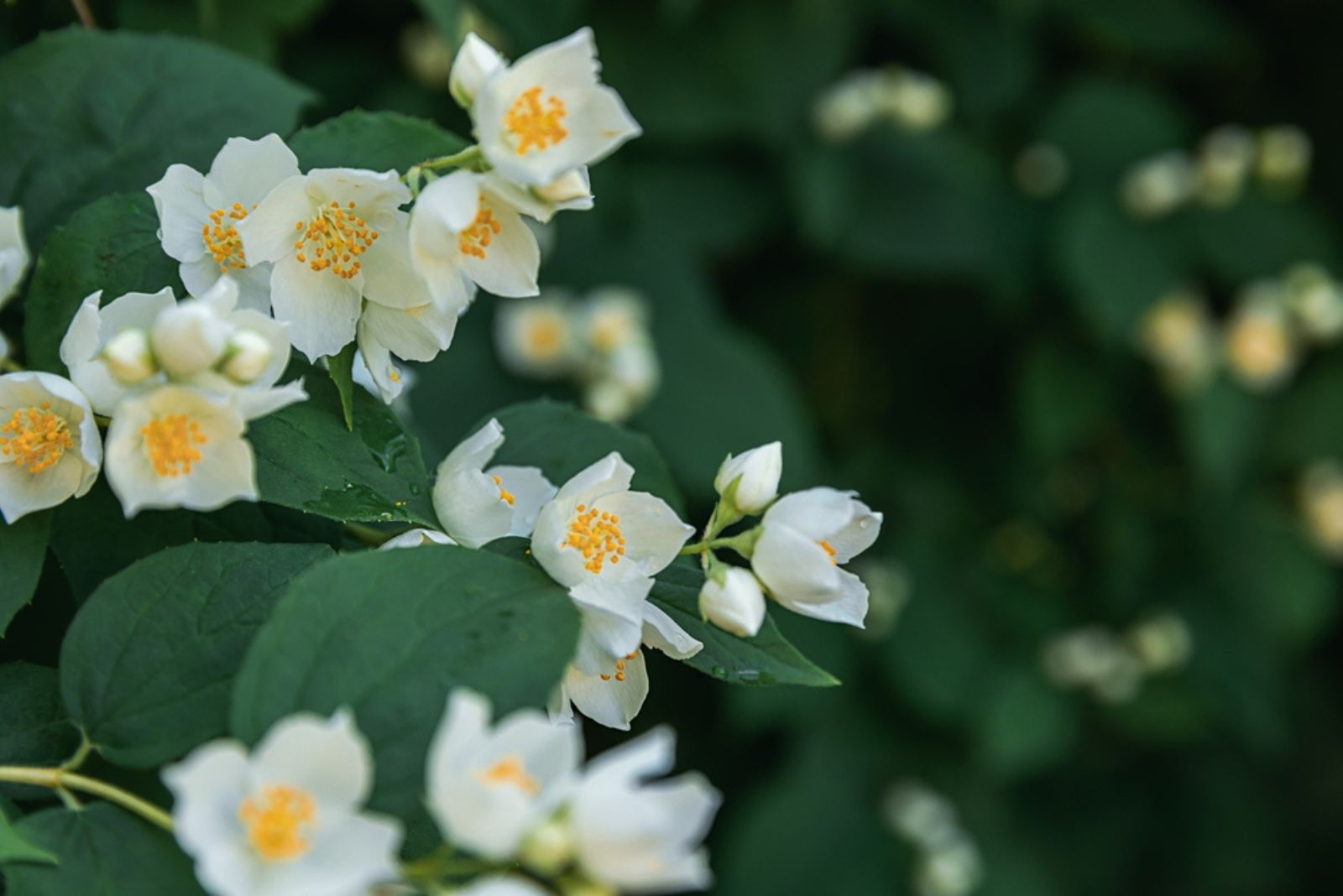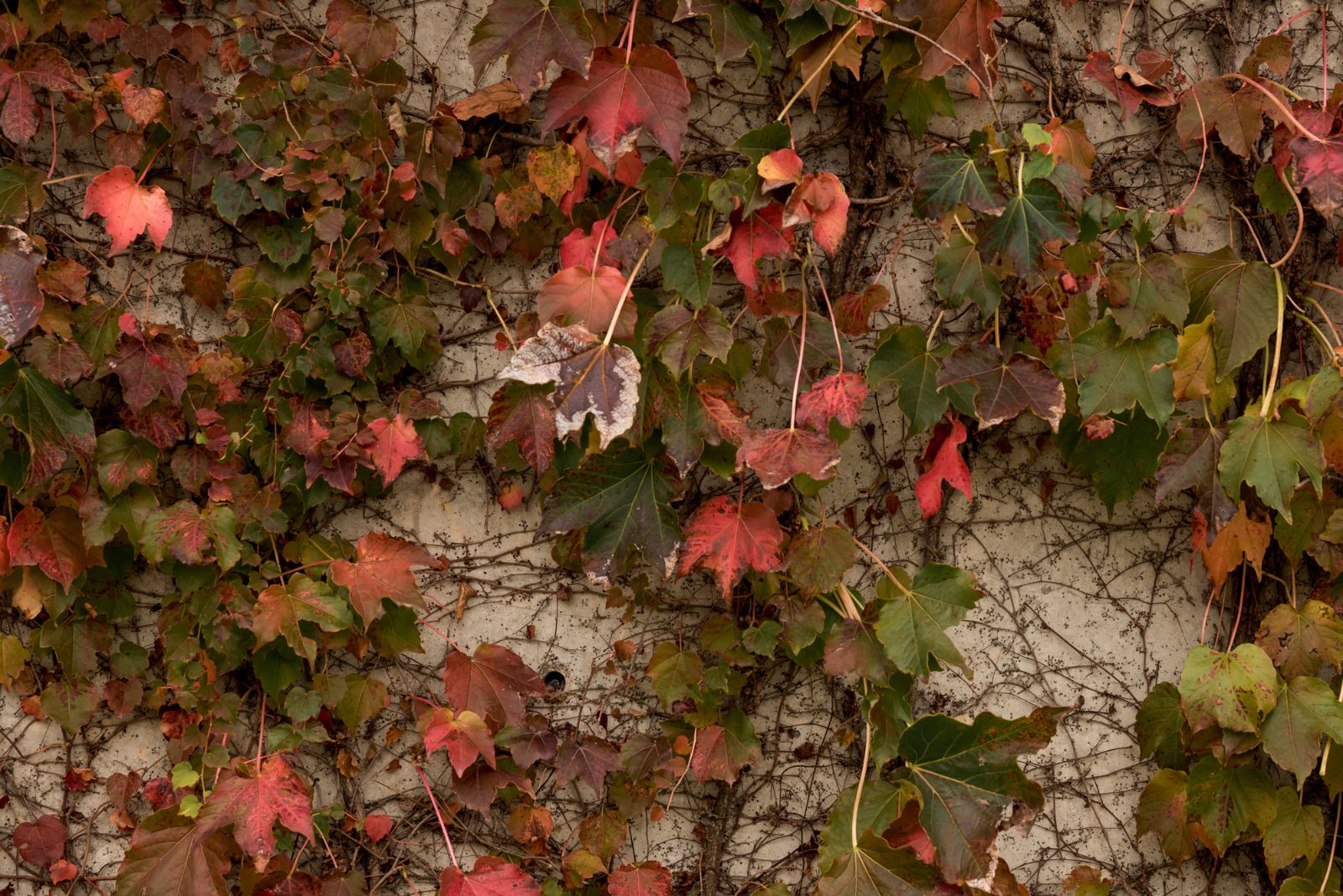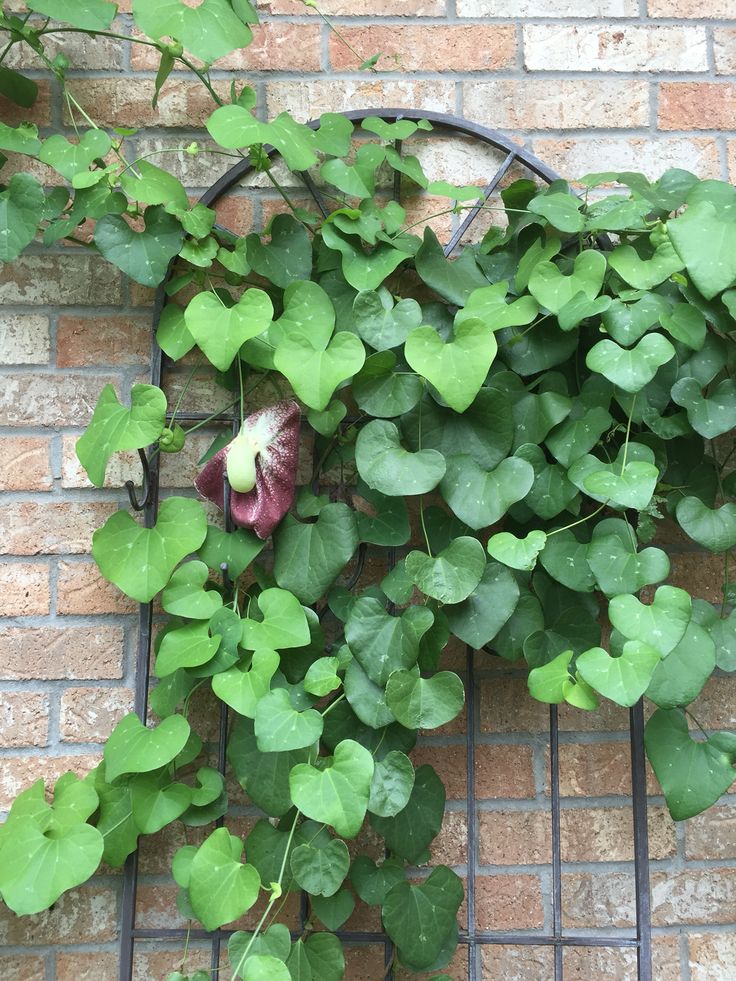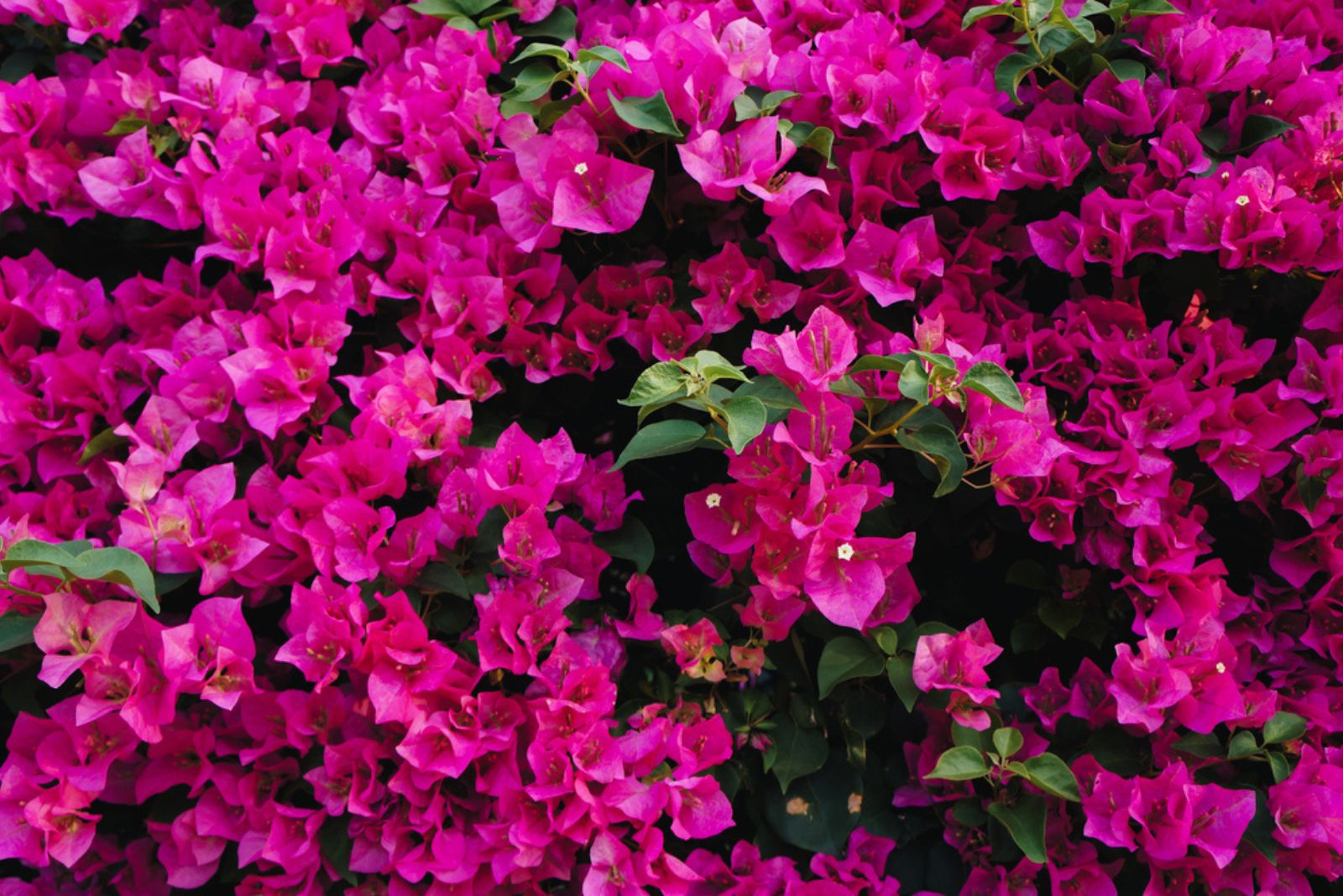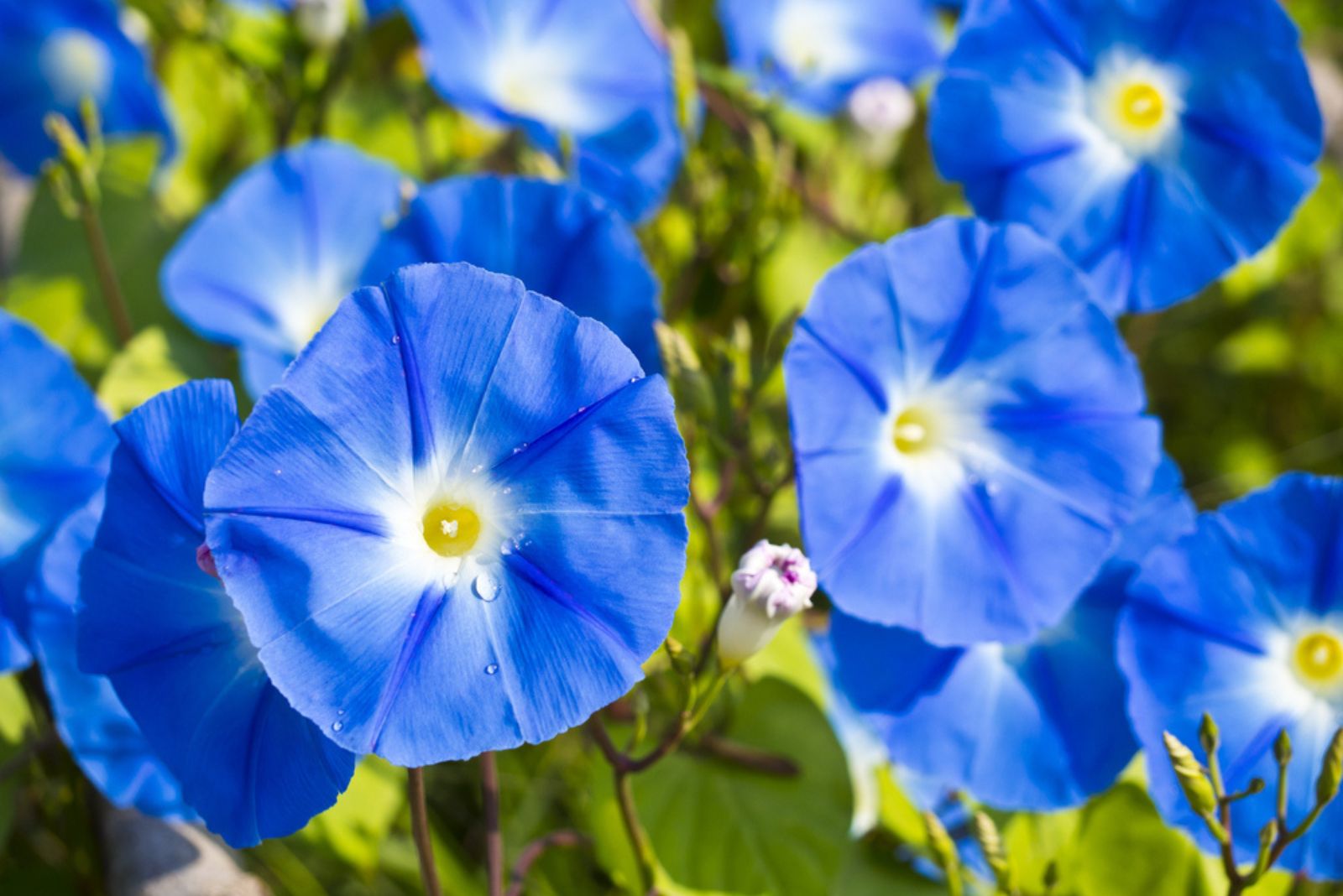There’s something simply enchanting about a flower-covered archway or a pergola draped in vibrant blooms swaying in the breeze (how romantic, right?).
But choosing the right plants for these structures can feel overwhelming. With so many options available, it’s hard to find the perfect balance of beauty, resilience, and ease of care.
You want flowers that will bloom profusely, complement your design, and stand the test of time, but not every vine fits the bill.
That’s why I’ve put together this guide to 12 perennial flowering vines that check all the boxes!
1. Clematis Is The Queen of Vines
Clematis is a superstar among flowering vines, reaching heights of 10 – 20 feet, of course, when properly supported.
Its large, showy flowers come in various colors, including purple, pink, and white, and can span up to 6 inches across.
This hardy perennial thrives in USDA zones 4-9, making it a versatile option for many climates.
Clematis offers stunning flowers from late spring to early fall, depending on the variety. Some types bloom twice a year, ensuring a long-lasting display of beauty.
Train Clematis by providing a sturdy trellis or fence. Its tendrils easily latch onto supports, but you may need to guide them early in their growth to ensure even coverage. Don’t forget to prune annually to encourage healthy blooms!
2. Honeysuckle For Sweet Fragrance And Endless Color
Honeysuckle vines can grow up to 20 feet, with clusters of tubular flowers in shades of red, orange, yellow, or white. These lovely plants are hardy in zones 4-9, so their resilient vines are perfect for almost any garden.
Famous honeysuckle flowers bloom from late spring through summer and they offer an intoxicating fragrance that attracts hummingbirds and bees. Believe it or not, some varieties even produce colorful berries in the fall.
Train Honeysuckle on arbors or along fences for a stunning vertical display. Don’t worry, its twining stems naturally wrap around supports, so I’m sure you won’t have trouble training them, no matter your gardening skills.
3. A Cascading Beauty Of Wisteria Will Steal The Show Come Spring
Wisteria vines are massive growers and can reach up to 30 feet with proper support. Their breathtaking clusters of purple, blue, or white flowers create a cascading effect that makes any pergola or arbor a showstopper.
These flowering vines are hardy in zones 5-9, and even if they look tough, they’ll definitely bring elegance to your outdoor space.
Wisterias typically flower in late spring and their fragrant blooms last for several weeks. Best of all, with age, Wisteria becomes even more spectacular and produces larger and more abundant flower clusters.
Provide your prized Wisteria with a strong structure because its woody vines can become heavy over time. Regular pruning ensures manageable growth and maximizes flowering potential.
4. Climbing Roses For A Timeless Elegance With A Romantic Twist
Climbing roses can grow 8-12 feet tall and feature classic rose blooms in a variety of colors, from deep red to pastel pink. I always say that they blend beauty with resilience since they’re hardy in USDA zones 4-9.
Flowering begins in late spring, with repeat-blooming varieties offering waves of blossoms throughout the growing season. And their fragrance adds just another layer of charm!
I highly recommend training your climbing roses on arched trellises or fences. Make sure to secure the canes with soft ties to encourage upward growth!
5. Attract Hummingbirds With Vibrant Trumpet Vines
Trumpet vines are vigorous growers, reaching 25-40 feet tall, with clusters of trumpet-shaped flowers in fiery orange, red, or yellow. They’re hardy in zones 4-9 and if your garden lacks a bold statement, trumpet vines will take care of it!
Their blossoms appear in midsummer and last into fall, and guess what, they attract hummingbirds and butterflies with their nectar-filled blooms.
Train Trumpet vines on fences or pergolas but monitor them closely because, as I mentioned, they can grow aggressively. Luckily, regular pruning helps maintain control and prevents them from overtaking nearby plants.
6. Sweet Pea Vine Has Delicate Blooms With A Captivating Scent
Sweet Pea vines grow up to 10 feet tall and produce clusters of dainty, fragrant flowers in pastel shades of pink, lavender, and white. They’re a must in all cottage gardens and they’re hardy in zones 7-10.
These annual-like perennials bloom from late spring through summer, and during this period, they’ll fill the air with a sweet, nostalgic scent. If you want to prolong flowering, deadheading is your best bet.
Train Sweet Pea vines on obelisks or trellises and they’ll provide support as the plant climbs. The good thing is that their tendrils naturally latch onto structures, making them effortless climbers.
7. Jasmine: Heavenly Aroma Meets Year-Round Charm
Here comes a garden classic! Jasmine vines can grow 15-30 feet tall, depending on the variety, with delicate white or yellow flowers and glossy green leaves.
They’re renowned for their evergreen beauty and perform best in zones 7-10.
Their star-shaped flowers bloom from spring through summer and release a heavenly fragrance that perfumes the garden. Some species, like winter jasmine, bloom even in colder months.
Trellises, walls, and fences all make great spots for jasmine and will offer excellent support. Use ties to guide their growth and prune regularly to maintain a neat and controlled shape.
8. Virginia Creeper’s Dynamic Foliage Will Turn Fire-Red in Fall
Virginia Creeper is one of the fastest-growing vines that can reach 30-50 feet. It makes it perfect for covering large walls or fences.
The lush green leaves turn vibrant red in the fall so you’ll get a stunning seasonal display. Virginia creeper is hardy in zones 4-9 so it’s a reliable choice for diverse climates.
Although gardeners primarily grow this vine for its foliage, Virginia Creeper produces lovely small clusters of bluish-black berries in the fall that add even more interest.
Simply train it on walls or trellises and prune it here and then to keep it in check!
9. Dutchman’s Pipe For A Unique Cottage Vibe
And now, a unique perennial flowering vine, the Dutchman’s Pipe! It grows up to 20-30 feet tall and produces lovely heart-shaped leaves and incredible, pipe-shaped flowers in purple or greenish-yellow.
You can grow it if you live in USDA zones 4 and above.
The Dutchman’s Pipe flowers bloom in late spring through summer and attract pollinators, especially moths, with their quirky appearance and scent.
The twining stems climb easily and will create dense coverage for privacy or shade on your pergola or trellis.
10. Bougainvillea Is Ideal For Warm-Weather Gardens
You’ll most definitely find bougainvillea in all gardens in warmer climates. If you provide it with the right support, your bougainvillea can reach up to 30 feet.
It’s not really cold-resistant, so if you live in zone 8 and lower, you might want to consider another plant.
Bougainvillea will add a splash of colors to your garden with its vibrant bracts, which come in shades of magenta, orange, and white.
I adore bougainvillea because it’s drought-tolerant and requires minimal maintenance, including the pruning part!
11. Passionflower’s Exotic Blooms Will Add a Tropical Touch To Your Yard
Passionflower vines grow 10-15 feet tall and feature striking, alien-like flowers with intricate details in purple, blue, or white.
These vines are a unique choice for warm climates since they thrive in zones 6 and above.
The flowers appear from summer to fall, sometimes followed by edible fruit in tropical varieties. Their dramatic look makes them a conversation starter in any garden.
Train your passionflower on trellises or allow it to cascade over walls. Its tendrils cling naturally, but occasional tying may help keep it in place for a neater appearance.
12. Morning Glory Flowers Are Early Risers That Welcome Each Day With Color
Trumpet-shaped flowers in shades of blue, pink, purple, and white adorn majestic morning glory and make it one of the most vining plants out there.
Interestingly, the blooms open in the morning and close by the afternoon, providing a fresh burst of color daily from summer to early fall.
Morning Glory vines can reach up to 10-15 feet tall and they perform best in USDA zones 3-10.
Make sure to plant your morning glory in a sunny spot for more blossoms and healthier growth!
Are you ready? It’s time to let your trellises, pergolas, and arches shine with these showstopping climbers! Best of all, they’ll come back season after season!

